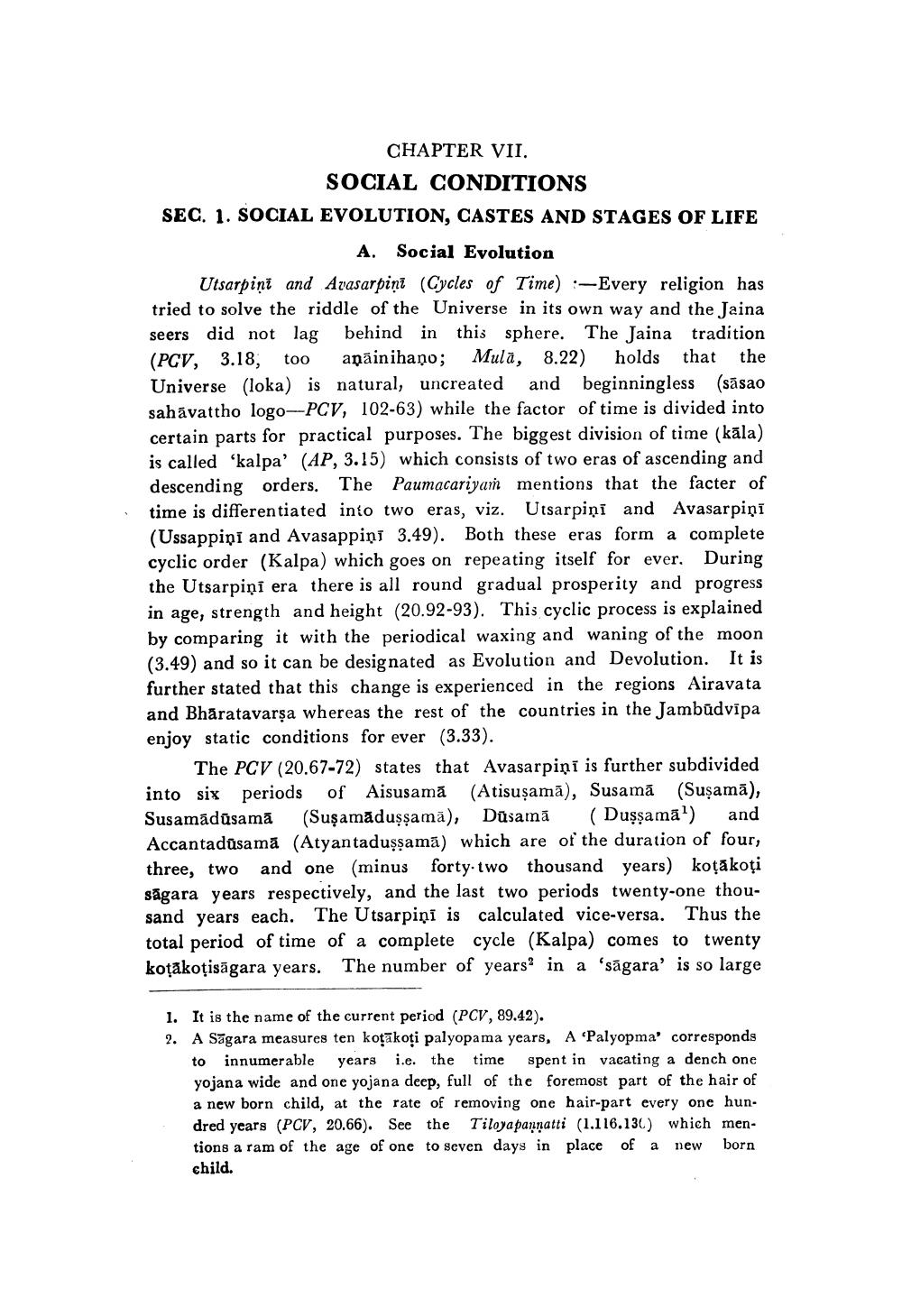________________
CHAPTER VII.
SOCIAL CONDITIONS SEC. 1. SOCIAL EVOLUTION, CASTES AND STAGES OF LIFE
A. Social Evolution Utsarpiņi and Avasarpini (Cycles of Time) : -Every religion has tried to solve the riddle of the Universe in its own way and the Jaina seers did not lag behind in this sphere. The Jaina tradition (PGV, 3.18, too aņāinihaņo; Mula, 8.22) holds that the Universe (loka) is natural, uncreated and beginningless (sāsao sahāvattho logo--PCV, 102-63) while the factor of time is divided into certain parts for practical purposes. The biggest division of time (kāla) is called 'kalpa' (AP, 3.15) which consists of two eras of ascending and descending orders. The Paumacariyaṁ mentions that the facter of time is differentiated into two eras, viz. Utsarpiņi and Avasarpiņi (Ussappiņi and Avasappiņi 3.49). Both these eras form a complete cyclic order (Kalpa) which goes on repeating itself for ever. During the Utsarpiņi era there is all round gradual prosperity and progress in age, strength and height (20.92-93). This cyclic process is explained by comparing it with the periodical waxing and waning of the moon (3.49) and so it can be designated as Evolution and Devolution. It is further stated that this change is experienced in the regions Airavata and Bhāratavarşa whereas the rest of the countries in the Jambūdvipa enjoy static conditions for ever (3.33).
The PCV (20.67-72) states that Avasarpiņi is further subdivided into six periods of Aisusamă (Atisuşamā), Susamā (Suşamā), Susamādūsamā (Suşamāduşşamā), Dusamā (Duşşamā) and Accantadūsama (Atyantaduşşamā) which are of the duration of four, three, two and one (minus forty-two thousand years) koțākoţi sägara years respectively, and the last two periods twenty-one thousand years each. The Utsarpiņi is calculated vice-versa. Thus the total period of time of a complete cycle (Kalpa) comes to twenty koțākoțisāgara years. The number of years in a 'sāgara' is so large
1. It is the name of the current period (PCV, 89.42). 2. A Sāgara measures ten kotākoti palyopama years, A Palyopma' corresponds
to innumerable years i.e. the time spent in vacating a dench one yojana wide and one yojana deep, full of the foremost part of the hair of a new born child, at the rate of removing one hair-part every one hun. dred years (PCV, 20.66). See the Tiloyapannatti (1.116.130) which mentions a ram of the age of one to seven days in place of a new born child.




